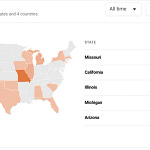
This episode comes out of the latest dispatch from The Embassy - The Best Year. Check it out in its entirety - but here is a bit of it …
View
2024. Will it be the worst year ever? Or maybe the best?
Those of us who are old enough remember when Prince sang -
… I was dreamin' when I wrote this
Forgive me if it goes astray
But when I woke up this mornin'
Could've sworn it was judgment day… The sky was all purple
There were people runnin' everywhere
Tryin' to run from the destruction
You know I didn't even care… 'Cause they say two thousand zero zero
Party over, oops out of time
So tonight I'm gonna party like it's 1999- Prince Rogers Nelson - 1999 lyrics © Universal Music Publishing Group
That was 1984 (another year carrying potential foreboding) and 1999 seemed a long way away. We were already beginning to fret about Y2K - the turn of the millennium would bring societal destruction wrought by the anger of the Technology God. It turned out that two thousand zero zero was not “party over, oops out of time” (hereafter denoted POOOOT).
But now it is 2024, or, depending on when you read this, almost. And some fret that we finally draw near to POOOOT. If you believe that there will be a POOOOT, we must be drawing nearer to it, I suppose. In fact, the year 2020 was claimed by many as the worst year - pandemic, racial unrest, violence - to be alive. But that turned out not to be POOOOT, in fact, many earlier candidates have come and gone. If one looks for a scientific answer to the question, “Is this the worst year ever?” - that answer is no. It turns out 536 is the scientifically determined winner of the worst year to be alive prize (WYTBA):
Ask medieval historian Michael McCormick what year was the worst to be alive, and he's got an answer: "536." Not 1349, when the Black Death wiped out half of Europe. Not 1918, when the flu killed 50 million to 100 million people, mostly young adults. But 536. In Europe, "It was the beginning of one of the worst periods to be alive, if not the worst year," says McCormick, a historian and archaeologist who chairs the Harvard University Initiative for the Science of the Human Past.
A mysterious fog plunged Europe, the Middle East, and parts of Asia into darkness, day and night—for 18 months. "For the sun gave forth its light without brightness, like the moon, during the whole year," wrote Byzantine historian Procopius. Temperatures in the summer of 536 fell 1.5°C to 2.5°C, initiating the coldest decade in the past 2300 years. Snow fell that summer in China; crops failed; people starved. The Irish chronicles record "a failure of bread from the years 536–539." Then, in 541, bubonic plague struck the Roman port of Pelusium, in Egypt. What came to be called the Plague of Justinian spread rapidly, wiping out one-third to one-half of the population of the eastern Roman Empire and hastening its collapse, McCormick says.
- Ann Gibbons, Science, November 2018
To review, we had a volcanic eruption sufficient to darken the sky for over a year and drop dust from the sky on a people many thousands of miles away who had no way of knowing why the sky was dark or dust was dropping. Failed crops, cold, snow in summer, starvation for years all over the world … followed by bubonic plague that killed up to half the population of the eastern Roman Empire - precipitating its collapse. That probably seemed like POOOOT to most people.
…
Links
1999 - Studio album by Prince and the Revolution - Warner Brothers - 1982
Why 536 was the ‘worst year to be alive.’ - Ann Gibbons, Science, November 2018
Volcanoes, plague, famine and endless winter: Welcome to 536, what historians and scientists believe was the ‘worst year to be alive’ - The Conversation, February 2022












Share this post